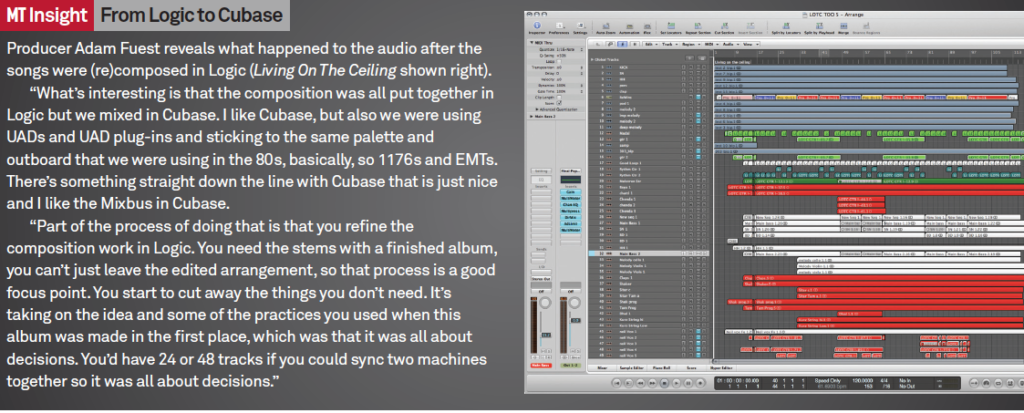Neil Arthur Interview – A Classic Blancmange Album Re-Recorded
It sounds like a dream assignment in many ways: using the latest software to record a classic album. But as Blancmange’s Neil Arthur reveals, the re-imagining of the band’s debut album Happy Families was not all plain-sailing, as Andy Jones finds out. Back in the early 80s, Blancmange was a band at a peak creatively, […]
It sounds like a dream assignment in many ways: using the latest software to record a classic album. But as Blancmange’s Neil Arthur reveals, the re-imagining of the band’s debut album Happy Families was not all plain-sailing, as Andy Jones finds out.
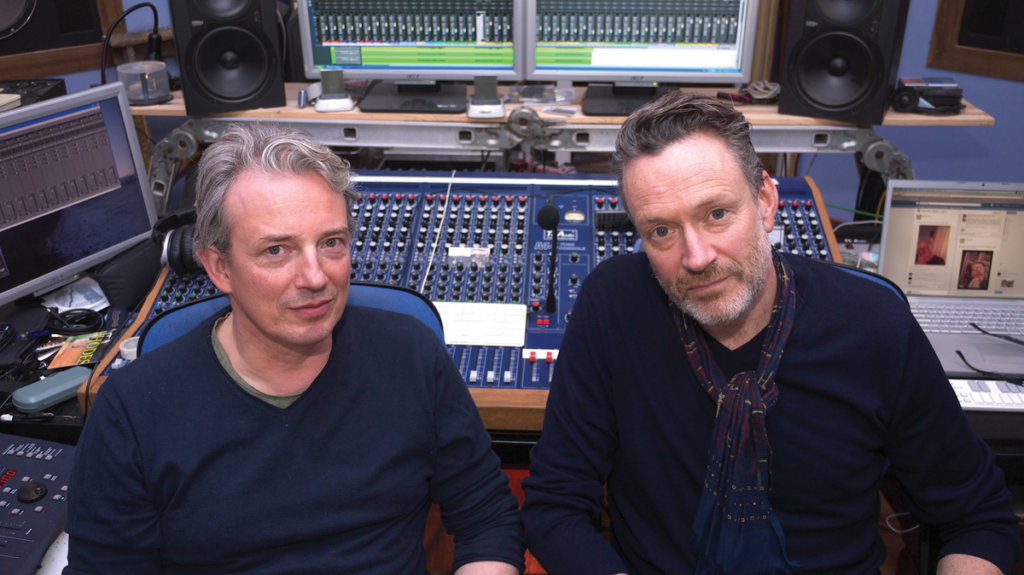
Back in the early 80s, Blancmange was a band at a peak creatively, commercially and technologically. They were scoring regular chart hits, selling records by the bucket load, enjoying the success (not so much the fame) and employing the then cutting-edge synths, drum machines and recording technology to produce their first album, Happy Families. It’s an album that has achieved classic status in the intervening years, with lush down-tempo tracks acting as a fine counterpoint to the up-beat and energetic singles that include the band’s biggest hit, Living On The Ceiling.
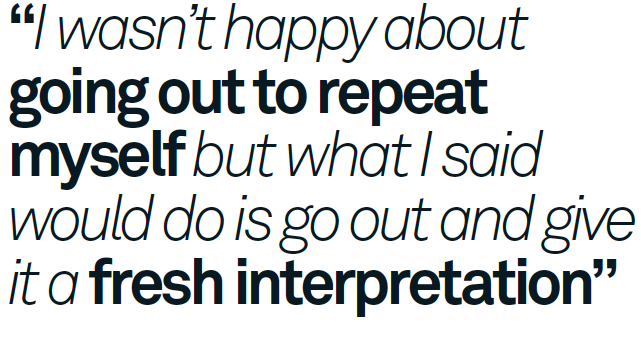
Peak Performance
Cut to 30 years later and we’re sitting in the incredible Twin Peaks Studios in the heart (and height) of the Brecon Beacons to discuss the re-recording of the album. Lead singer Neil Arthur is joined by long-time producer Adam Fuest to discuss the project, and while you might think that modern technology would help to smooth the process, it didn’t solve all the problems. But before we get in too deep, let’s step back a moment and ask why the project is happening in the first place…
“We were asked to go out and do a classic album tour,” Neil explains. “I wasn’t happy about going out to repeat myself but what I said would do is go out and give it a fresh interpretation, whether people liked it or not, because that is how we are and that is like it was the first time. I don’t have a problem with the original or how it was recorded in 1982, I can live with that, but I don’t want to cheat people or myself by just repeating the past.”
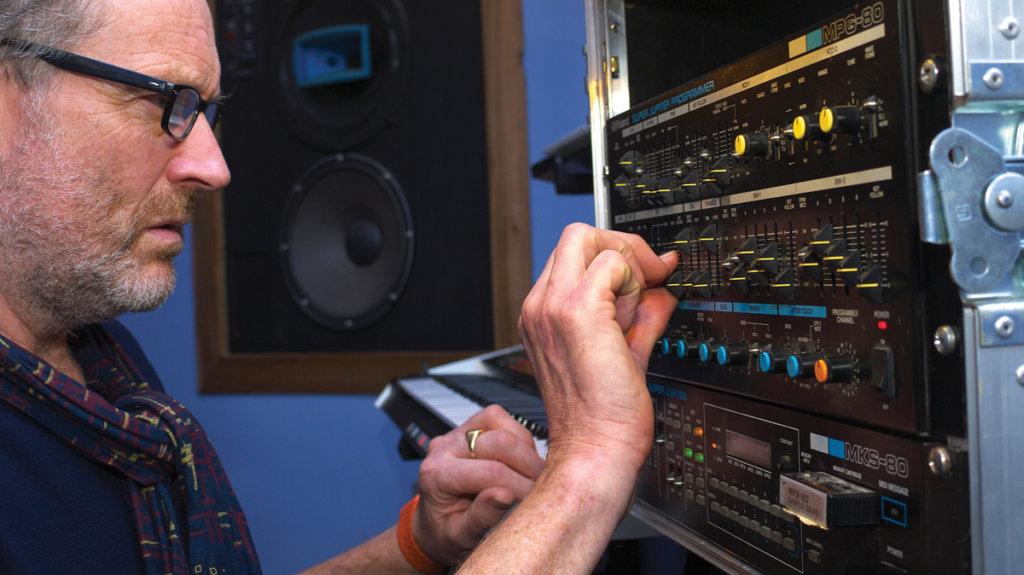
Neil plays some classic Blancmange gear.
The project was completed with the blessing of long-time Blancmange member Stephen Luscombe (“He’s part of the happy family but is not well and has to be careful with movement so touring is out. He’s contributed a small bit, some stuff on God’s Kitchen and Living On The Ceiling”) but mostly with “great mate” Adam Fuest, and original Blancmange touring players David Rhodes (guitar) and Pandit Dinesh (percussion) both guesting.
“I thought we’d re-record it with today’s technology and that’s what we set about doing – and it’s been a heck of a journey!” Neil says. “The weird thing was that when we started I imagined that we’d not recorded the album the first time around. I imagined that the songs had been written with lyrics and melodies and now they were going to be recorded. So I didn’t listen to any of the original songs – I know them all anyway. I analysed parts of the demos but only small parts. You end up going into the audio with a microscope and it brought back very specific memories – like one where me and Stephen were standing over the LinnDrum of 808 and both programming at the same time.”
So, no listening to the original tracks nor revisiting the original multitracks… for good reason: “They are lost,” Neil reveals. “Living On A Ceiling is lost. Paul Oakenfold was going to do a remix and London Records asked us where the multitrack was and neither of us had them, so that has been missing a long time. It is somewhere but we don’t know where. It’s not frustrating now but it was when Oakenfold was looking for it!”
Track Specific
While Neil tried to re-create the songs with just the melodies and lyrics in place, he was very much aware that certain characteristics of the originals had to be preserved…
“I wanted to absolutely understand the originals by analysing an early demo or an element,” he says. “With the percussion on Living On The Ceiling, for example, I looked at the hi-hat pattern and realised that no one would normally program that pattern because we did it as non-musicians but just recorded it anyway. But that pattern actually makes the song, so on the new version that pattern stayed absolutely faithful to the original. And apart from the bass drum now being four-to-the-floor, the rest of the percussion stays faithful to the original too. With the bass line I added a sub and a bass line with more movement that is easy to open and close [the filter] now, but would have been harder to control back then.
“What I also wanted to do was pare everything down and make performances very direct,” he continues. “So I’ve stripped back all the extraneous stuff to get a more direct delivery. I imagined each time that it was like a live performance. For example, I Can’t Explain is all about the groove, essentially an ad lib in terms of a song, just a groove. With Feel Me, I stripped it right down and my daughter did backing vocals through a vocoder! I just wanted a different take. She was just in the house so I asked her! She has a lovely voice…”
Time Travel
Neil has already mentioned the memories that revisiting these three-decade-old songs triggered, and the process became even more personal and emotional at times…
“Adam and I recorded all the vocals in three days at my place, start to finish – 11 songs in total, as I’ve now added the track Running Thin, which wasn’t on the original album. That was incredible as a person who is 31 years older than the person who sang them initially. And some of the songs, like Cruel and Kind, I haven’t sung in 30 years. It was bizarre meeting myself again, really bizarre – I was like: ‘Neil, this is fucking weird’. It was really moving for me to go through that experience but the thing is it wasn’t me I was seeing; it was the other people who were there. It was very weird and very moving and quite a journey…”
He is clearly back in the moment as he describes the memory but quickly quips, “And we’re only having a thousand copies pressed! I’m a fool!”
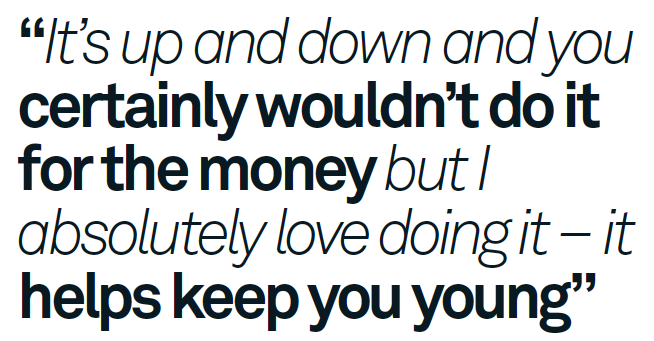
Moving further into the technology and we have Logic firmly at the heart of the process (“I’ve used Logic since it was Notator, so I know my way around that. Many people look at it and say it’s not logical, but I’ve worked with it for so long that I know where to go with it.”) but it wasn’t all new tech – some of the band’s original equipment had to be used, specifically two items…
“The first keyboard that Stephen bought for Blancmange was the Roland Super Jupiter, and the first thing we ever bought was this TR-808. In fact, we had two of them. The reason we got them was that it was before computers were used so this was the way you sequenced, so you’d send the output of the 808 to trigger a synth, for example. So we’d use the cowbell part, which we never used, turn down the volume and it would trigger 16 beats in the bar, sending it, for example, into the Korg MS20 synth. And that would be the bass line on I’ve Seen The Word.
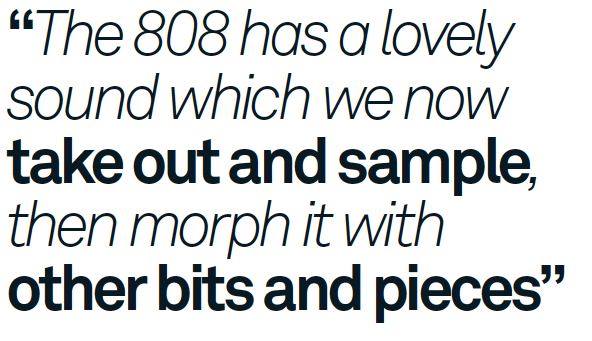
“But the 808 also has a lovely sound which we now take out and sample, morph it with other bits and pieces, and use it in with other things. This Super Jupiter was bought a bit later. It’s called a Super Jupiter though it’s actually slightly different, but it has the most amazing sound. People have this and find it a bugger to program, but the beauty of it is that it plugs into this, the MPG-80, which does all the business. That is obviously MIDI’d so you can set it to an external MIDI device –so as long as Logic sees it, then great. It has some fantastic sounds. So those – the TR-808 and Roland Super Jupiter – were the backbone as far as the ‘old’ technology goes.”
That’s the older kit out of the way, but what about newer additions to the Blancmange setup?
“My default soft-synth is the G-Force impOSCar 2 and the Oddity, just for its oddness – it’s just so out there as soon as you put it on,” says Neil. “I worked with both the originals, particularly the latter. Playing around with a synthesizer like that, it’s just amazing what you might come up with. I write on a guitar – I can play enough to get an idea down – but the amazing thing with a synth is that you just put a bass part in and fiddle around, and it’s like: ‘where’s this going to take me?’ It’s lovely; I can have a great beer and just sit and fiddle and it’s a lovely thing, like ‘I’ll have half an hour of that’ until it’s like, ‘supper’s ready’!”
Neil lists various other plug-ins used across the album: “We’ve got Waves, Logic’s Bass Amp, ES1… I tell you what I do use: Audio Damage Filterstation; Smart Electronix LiveCut, that gets used quite a lot. It gives you a random, weird, chop-up on different parts of audio. I like that and it was used on [the last and most recent Blancmange album] Blanc Burn and on this record.”
Problems Solved?
So has the latest studio technology eradicated all of the original problems the band faced three decades ago?
“Actually, it’s created problems,” Neil laughs. “I now don’t get ‘think time’.

When you used to have a tape machine running with a sync tone on it and you were trying to get whatever it was to run in time – whether it was a LinnDrum or an 808 or a sequencer – there wasn’t just the rewind time that gave you pause for thought, there was the moment the tape got back to the front and decided whether it was going to go forwards again, and then you had to wait for everything else to jump in and that was your think time. Now…”
… he turns to Logic, presses the space bar to start, stop and start again for instant rewind to start…
“… there is no think time! It was something that was built-in to your session. Recording sessions back then were actually quite long, but the actual recording time wasn’t always the biggest part of it.”
Adam adds: “And people would make judgements entirely on what they heard, while now they often look at the screen for confirmation.”
Neil: “Yes, there was nothing to look at so you had to listen, and a lot of people now look at audio.”
Adam: “It’s like they check their timing by looking at it, not listening to it.”
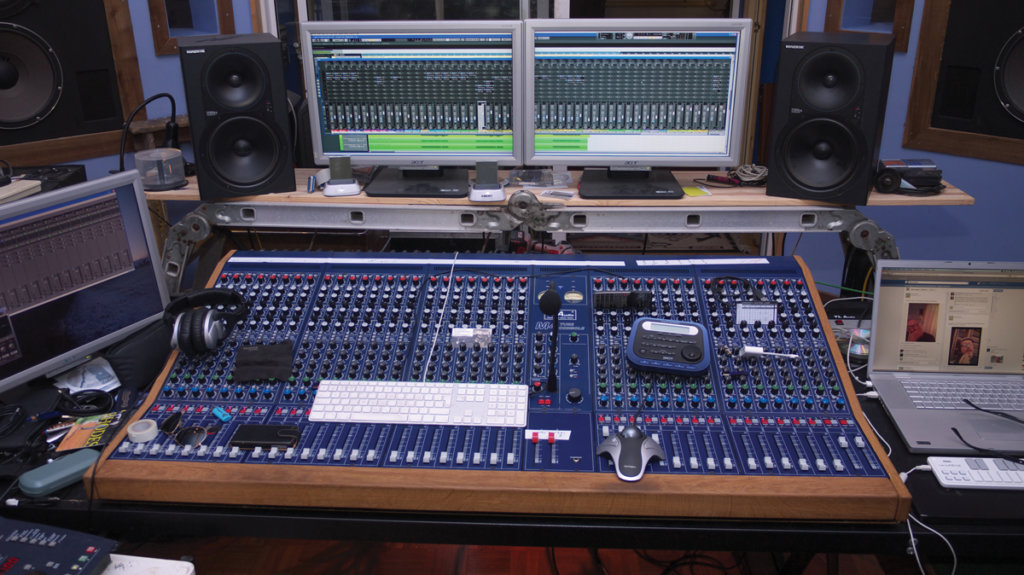
The heart of Twin Peaks is a superb TLA desk. Adam preferred his Cubase for mixing the album, porting the audio stems over from Neil’s Logic set-up and shown here on the screens above the desk.
Neil: “I’ve spent so many years quantizing stuff that I do think I can hear when something is even slightly out – and it will take something to convince me otherwise. But I’m not a square-basher. I was lucky enough to get to see Kraftwerk playing at the Tate, and what was really interesting about the sound is that when they did the melody lines, sometimes there was some movement. They are such bloody good melody lines: really considered, so bloody good and yet so simple. The most simple things are often the most difficult –we all know that. It’s so difficult not to add something but they don’t”
“But when they were playing – not on every song but on some of the songs – they would just move it a little bit and somehow give it that kind of humanity. It wasn’t the velocity or the touch-sensitivity, it was just a little bit forwards or a little bit behind, so good that it made it feel just so fragile, that it was going to fall to bits, but that I absolutely love in any kind of music where it’s just holding together – I just love stuff like that. If we have achieved anything like that on this album, where it kind of goes in and out and it feels so delicate at times and that tension is there, then that would be bloody brilliant.”
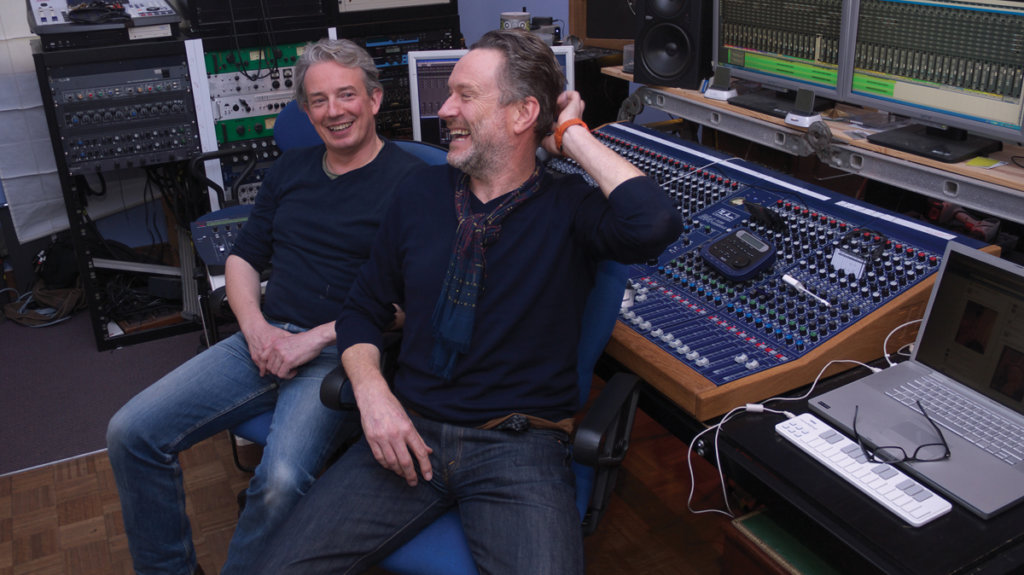
With Happy Families Too in the bag. Adam and Neil can relax at Twin Peaks
And the Future?
And although this particular project is nodding back to a 30-year-old album, Neil already has his sights fixed on the future for Blancmange…
“I’ve already written the fifth Blancmange album, which Stephen will come in and help with,” he says. “I’m always looking around the corner, looking for the next thing and getting ideas. Sometimes they are musical or from something someone says. You’re sitting on a bus, on the train or in the pub and something someone says you think ‘that’s funny’ and I have several notebooks and I’m always doodling some bloody rubbish!
“It is good fun,” he says of the band’s continuity. “It’s up and down and you certainly wouldn’t do it for the money but I absolutely love doing it – it helps keep you young! Back in the day you’d meet people on tour and it was a much different game; you were always being whisked off to be somewhere that you probably didn’t really want to be. Now I meet people at the merchandise stand and it’s great to meet people and they tell me their stories; we just chat and I get more ammunition for songs.”
